What AI can and cannot do in 2021

Often non-technical founders/ CEOs have an over-inflated expectation of what AI can achieve and might expect engineering teams to build the impossible. The media paints an unrealistic picture of the powers of AI. Only successful stories of AI implementations are reported. A lot of these results are just examples of what can be achieved in an artificial, controlled environment with clean data.
AI is already transforming web search, advertising, logistics, e-commerce, manufacturing, finance, media, HR, healthcare and more. But this isn't magic, these are implementations of AI in narrowly bounded verticals for specific use-cases. While today's AI might be able to detect a particular kind of cancer with a higher accuracy than human doctors, or beat chess/ AlphaGo world champions, we still have a very long way to go before we build anything remotely resembling an artificial general intelligence. This article is an attempt to set aside the hype, and clarify what AI can (and cannot) do today.
The state of AI today
The global Artificial Intelligence Market was valued to be worth USD 129.28 billion in 2022. The AI market is expected to become a $190 billion industry by 2025.
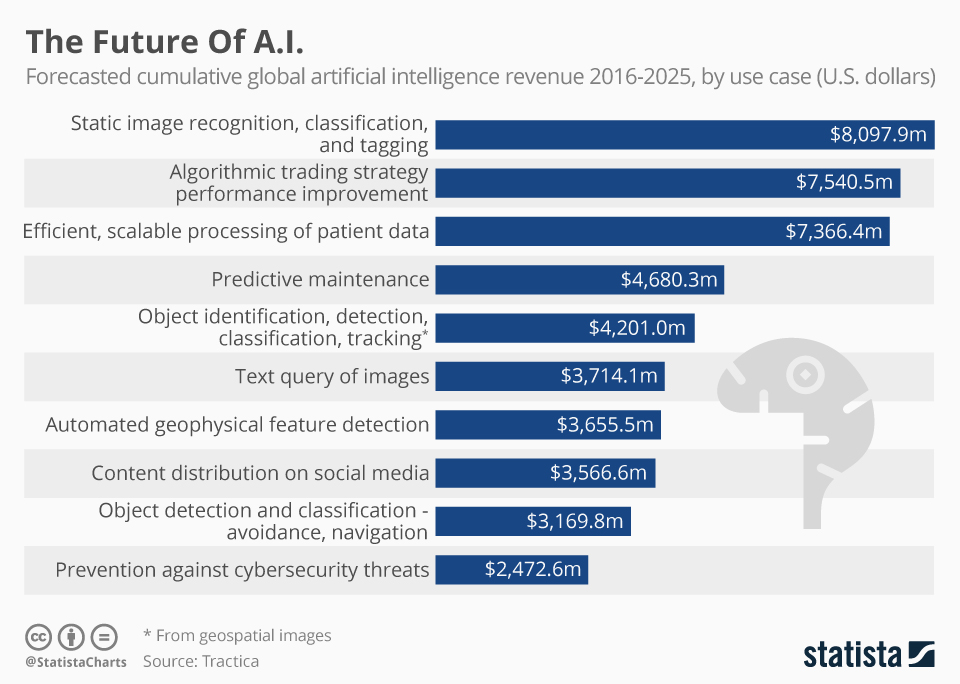
The current commercial applications of AI are relatively low-risk. If Amazon's recommendation algorithms miss a cross-selling opportunity or if Netflix recommends a sitcom you end up not liking, the associated cost is probably $20 or a bad review.
While an accuracy of 99% sounds great on paper, and works really well for a lot of use-cases, would you be comfortable sitting in a self-driving car, or being operated on by a robot with an accuracy of 99%?
Andrew Ng simplifies the status quo: "Almost all of AI’s recent progress is through one type, in which some input data A is used to quickly generate some simple response B (supervised learning)."
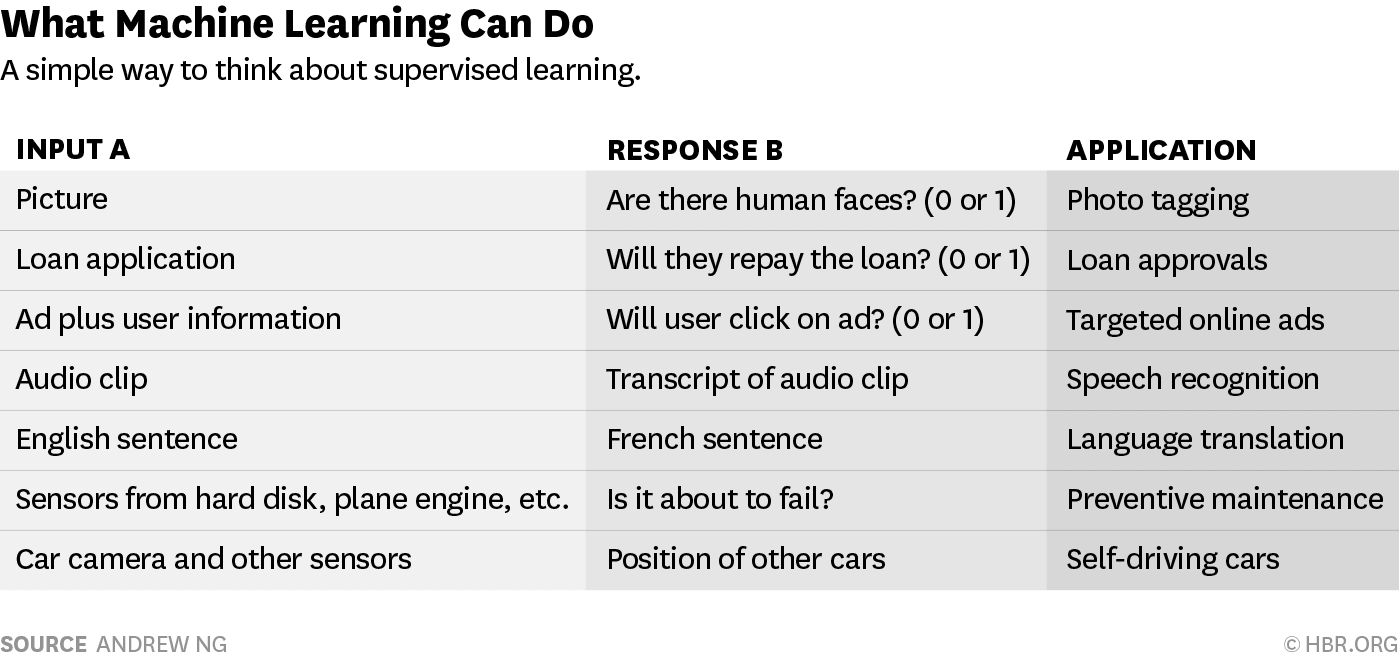
Andrew Ng's rule of thumb: most things you can do with less than 1 second of thought, you can automate with AI.
In the following section we try to cover which industries are currently using (or not using) AI
Chatbots/ Customer Support
While the global chatbot market is expected to cross 9 billion dollars by 2024 and an increasing number of companies are adopting chatbots to aid with customer support, chatbots are also one of the most misunderstood technologies.
Rule-based bots (typically in a conditional if/then format) can respond to questions based on a predefined set of embedded rules but cannot have an open-ended conversation, making them much simpler to build than AI bots.
Most chatbots that we engage with on a day-to-day basis are rule based chatbots that have no AI component and that's a good thing- most chatbot use-cases do not require AI.
For e.g. a chatbot to order a pizza or book a doctor's appointment- adding an AI layer to such chatbots would make a simple transaction more complicated, and leaves the user disappointed.
AI chatbot
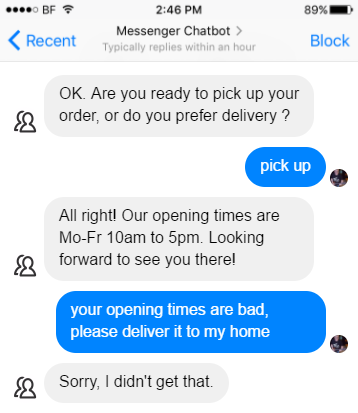
Rule based chatbot
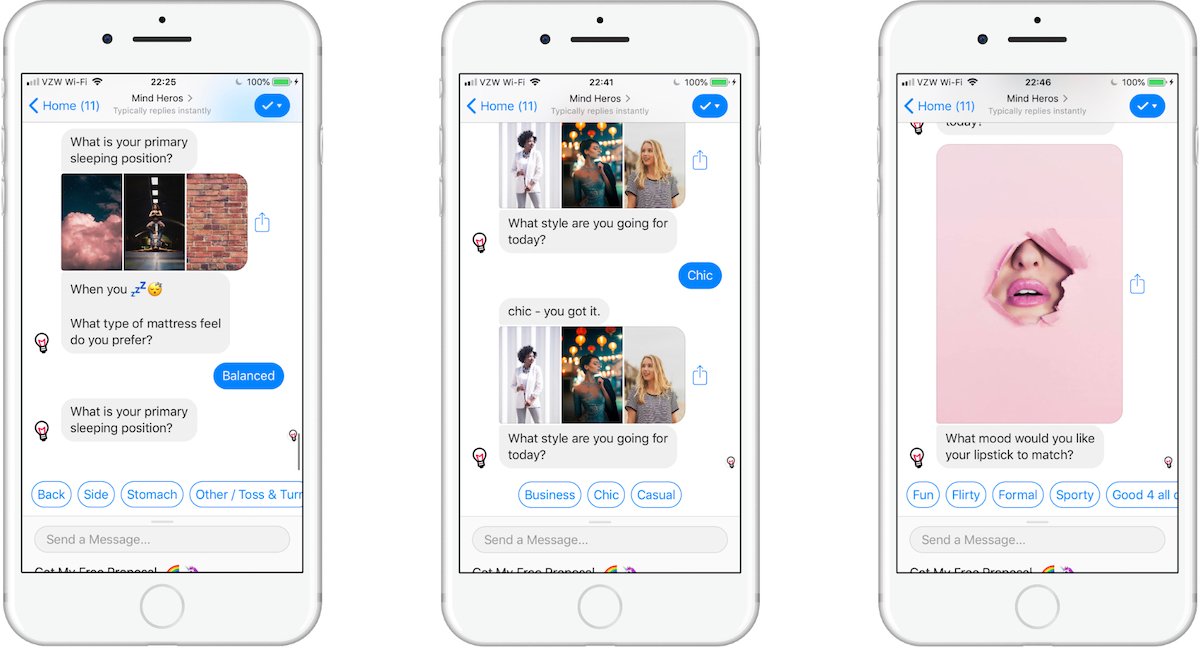
A simple natural language processing (NLP) based chatbot can handle the repetitive tasks human support agents previously had to do- addressing common questions, tracking packages, taking orders or redirecting users to FAQs. Beyond that, chatbots need to rely on a fail-safe mechanism to redirect to a human agent when the user query is more complex- a major part of the intelligence is also in knowing the limitations of the bot and escalating when required.
- Shay Chinn, Chief Technology Officer of Agent.ai
Banking & Finance
The most visible implementation of "AI" in the banking sector is at the front end to mimic employees through chatbots and voice assistants and use personalized insights and recommendations to deepen customer relationships. We've already covered rule-based chatbots above, and if you try to use a chatbot on your bank's website you will know what I'm talking about- you will see the A, but it will be clear that there's no I (yet).
The real applications of AI in the future will come in where there is a huge volume of data a human cannot process. ML models could make it easier to capture fraudulent transactions, based on the transaction history and labelled data of what fraudulent transactions look like. Hedge funds are also experimenting with AI models to make decisions in real-time to bridge the gap between number crunching and business acumen.
While the promise of AI is big in the banking sector, the focus is on automating repetitive tasks which do not require human judgement.
Any large-scale commercial applications of AI like loan approvals will have to wait for explainable AI to become mainstream because of the regulatory risks involved.
Manufacturing
One of the main use cases of AI in manufacturing is quality control. Machines can be equipped with hyper-sensitive cameras that can detect even the smallest defects in products, better than the human eye. By installing cameras at key points along the factory floor, machine vision can spot any imperfections and this classification can happen automatically and in real-time.
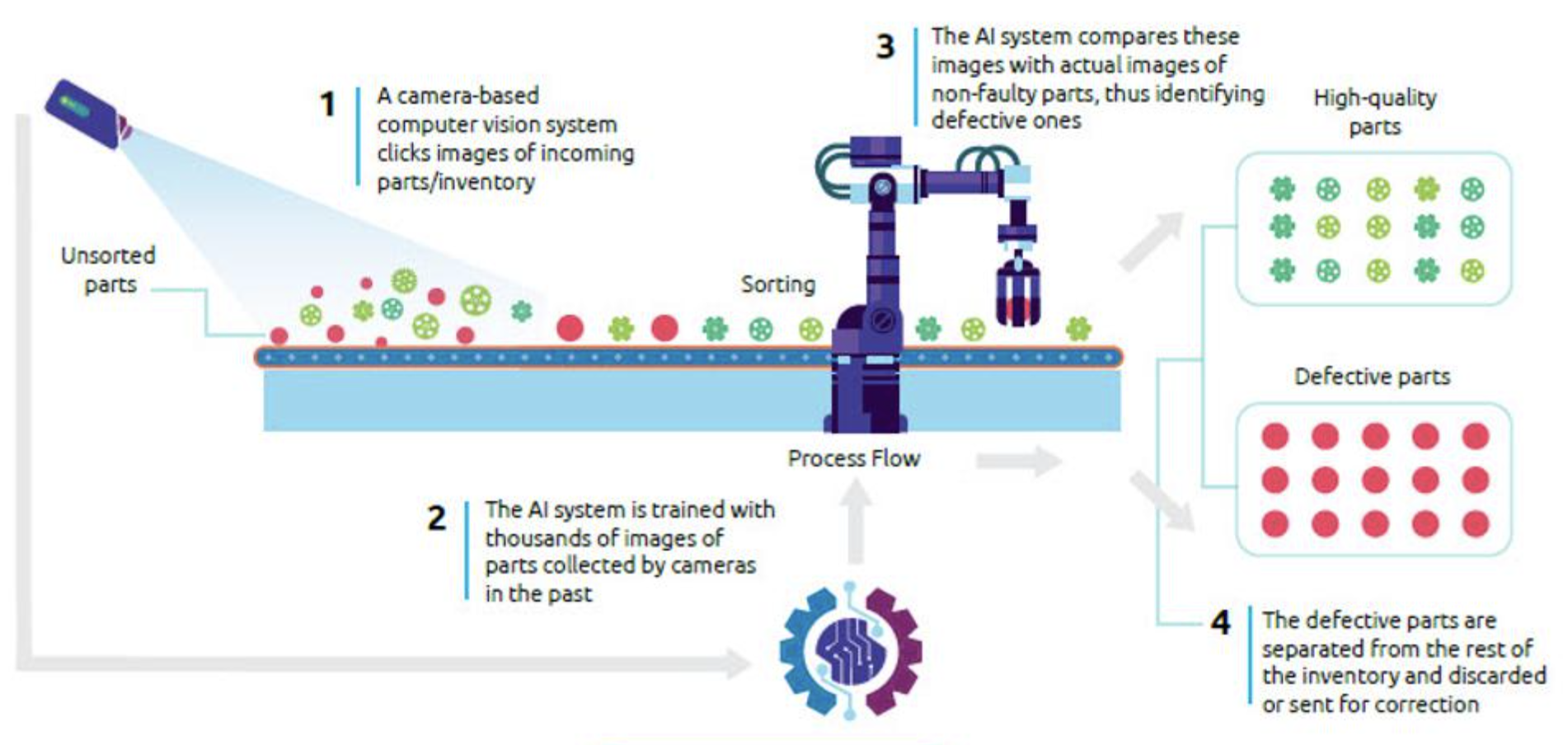
Medtech
One thing AI is better at than humans is pattern recognition, because of the ability to "see" and learn from millions of data points. A narrow AI trained for a specific diagnostic use case can identify patients who are at risk of developing a condition, facilitating early detection and treatment.
Predictive models are central to Drug discovery. Statistical models can predict whether a compound idea (a not-yet-synthesized molecule) will produce a desired activity.
This enables researchers to narrow their search and only focus on compound ideas that have potential.
The other ways healthcare is currently being digitised (and what passes as "AI" ) are:
- Patient monitoring systems (and getting patients to follow treatment)
- Telehealth (video call your doctor)
- Helping patients manage chronic diseases
Not to say that these problems are not worth solving, they absolutely are. It is just that most companies oversell AI just to ride the bandwagon (mainly to attract investor/ media interest).
Human resources/ recruitment
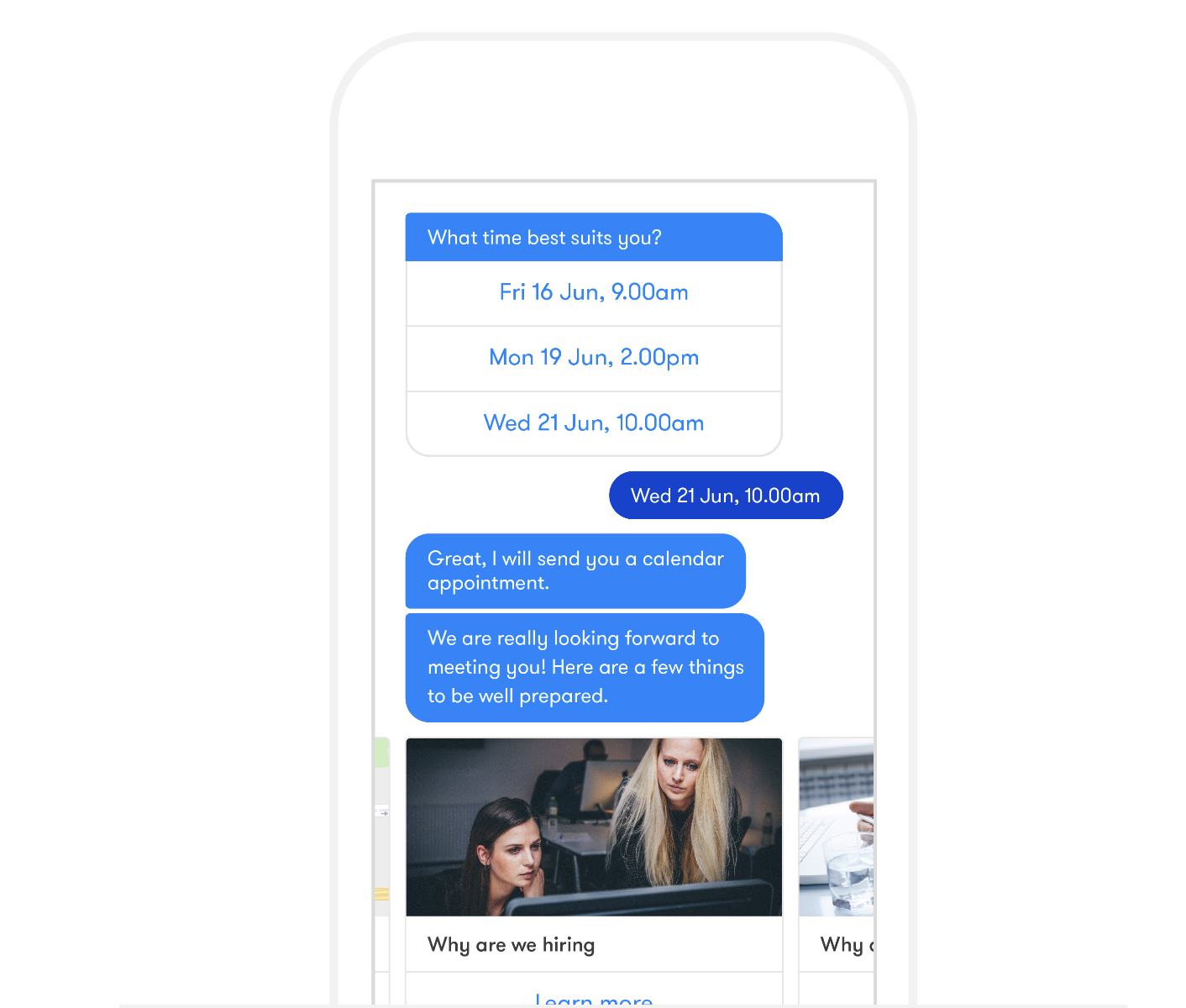
While several corporates are going big on recruitment automation, there are very few AI implementations. Resume parsers can filter out irrelevant applications, chatbots can engage candidates, answer questions about work culture, leave policies and pre-qualify candidates on the basis of pre-defined rules (is the candidate willing to relocate?), software can schedule interviews at mutually convenient times- these simple rule based workflows can be automated without any AI. There are also legal implications around using AI in recruitment to make sure that the automation is not adding to bias in the employment practices.
Sales & Marketing
AI can help sales & marketing teams understand their customers’ needs better and automate unintelligent manual tasks. AI's ability to patiently process large datasets from a number of sources can help it get a 360 view and recommend which leads to prioritize based on the probability of conversion and potential deal size. Sales actions recommendations might also include pricing tips or which customers to target first with upsells or cross-sells.
While this sounds fancy, most of the current software in this domain is rule based (for e.g. if a lead has opened an email in the las 24 hours, the "AI" might think it is a good time to re-engage the lead with another email).
Machine learning models can be trained to find patterns from huge historical data sets—including browsing history, online shopping behavior and offline point-of-sale data. The ideal (creepy?) scenario is being able to predict what users might want to buy next before users themselves know.
Also, machine generated content is here. Marketers across the globe are exploring how this can help them deliver personalized ads. Using historic performance data of an ad, AI can understand which ad (what image and what text) is resonating with which customers and create ads with similar parameters at scale for target audiences in that demographic.
Why AI isn't moving faster
The 2 factors that slow down our progress in AI are lack of talent and lack of data. While hundreds of thousands of developers mention AI on their resume, there is a lack of well-trained AI talent who can take up and drive complex AI projects. On the other hand, most AI applications require training data, which depending upon the use-case might require years of data collection before a reasonable accuracy can be achieved. Organizations are very conservative about sharing their data, since it is a defensible barrier and can provide a major competitive advantage in the future.
Talk of the AI town these days
There’s been a lot of hype and excitement around the GPT-3 launch by OpenAI. GPT-3 stands for the 3rd version of Generative Pre-trained Transformer- a technology that generates text using pre-trained algorithms.

How does it work?
These algorithms have been fed around 570 GB of textual information from the internet. Explained simply- GPT-3 is a language prediction model- because the model has already seen 570 GB of text and understood the patterns in this huge amounts of text it can do a very good job of predicting which word is most likely to follow a given set of words.
Explainable AI
Explainable AI is a set of tools to help interpret predictions made by machine learning models.
Current machine learning and deep learning models make it very difficult to understand how a particular prediction/ recommendation/ decision was arrived at. Spotify doesn't need to explain their music recommendations and has no associated legal/ regulatory repercussions for a bad recommendation. But there are several high-stakes scenarios where there is a need to explain how a particular decision was arrived at- you cannot operate with a black box approach.
Even a well functioning black box with 100% accuracy has a limited utility in regulated industries like banking and healthcare.
For these industries, we need to build interpretable and inclusive AI systems with tools designed to help detect bias and other gaps. AI needs to be transparent in its approach and operations so that we can understand, reverse-engineer and trust their decisions.
Conclusion
Although today's AI can distinguish between cats and dogs after a lot of training, detect objects in images, detect manufacturing defects, diagnose diseases, speak in an almost-human voice and generate better performing ads, it is a long way from taking over the human race. The promise of AI is immense, but the technologies and tools needed to get us there haven’t fully arrived yet.
